The Humanities Center held its 9th annual Undergraduate Research Symposium on Friday, October 29th at 3:00 PM in the Education in Zion Theater. This year’s event featured 6 undergraduate students from the College of Humanities and their research.
Candace Brown: “Hear Him: Listening to the Holy Face”
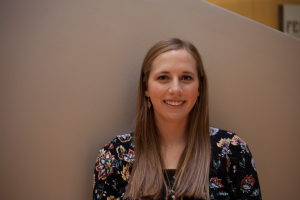 The diptych–an important format used by Netherlandish Renaissance artists–is generally defined as two distinct panels hinged together or hung side by side. One panel generally depicts the donor at prayer while the other shows a holy figure such as the Virgin Mary. However, contemporary inventory records reveal the original Netherlandish understanding, that a “diptych” was simply two images grouped together, perhaps in more unusual ways than side by side. One such is seen in the Portrait of a Lady (1465) from the workshop of Rogier van der Weyden, which features the bust of a woman on one side of a panel and a frontal portrait of Christ on its reverse. While the piece has been passed over as a simple imitation of Van der Weyden’s portraits, the oft-neglected image of Christ reveals a personal spiritual purpose. The verso portrait is Byzantine in style and heavily damaged, likely predating the woman’s portrait by several generations. The use of a recycled panel, particularly one featuring an internationally significant cult image such as the Holy Face of Jesus, cannot have been accidental. My paper explores the artistic and spiritual significance of such a “diptych,” focusing in particular on the implications of Christ’s countenance hidden behind the woman’s face. Christ’s rather odd presentation, mouth slightly open and gaze direct, gives the impression that He speaks in the woman’s mind, a concept consistent with popular religious texts inviting the devout to “give ear”–as the woman does, her own prominently displayed–to the “voice of Christ speaking in your heart,” for “blessed indeed are the ears that listen.” Rather than spiritually seeing Christ before her, as she would in a side-by-side pairing, it seems that this woman, in a perpetual state of meditation, hears and has her Lord constantly within her.
The diptych–an important format used by Netherlandish Renaissance artists–is generally defined as two distinct panels hinged together or hung side by side. One panel generally depicts the donor at prayer while the other shows a holy figure such as the Virgin Mary. However, contemporary inventory records reveal the original Netherlandish understanding, that a “diptych” was simply two images grouped together, perhaps in more unusual ways than side by side. One such is seen in the Portrait of a Lady (1465) from the workshop of Rogier van der Weyden, which features the bust of a woman on one side of a panel and a frontal portrait of Christ on its reverse. While the piece has been passed over as a simple imitation of Van der Weyden’s portraits, the oft-neglected image of Christ reveals a personal spiritual purpose. The verso portrait is Byzantine in style and heavily damaged, likely predating the woman’s portrait by several generations. The use of a recycled panel, particularly one featuring an internationally significant cult image such as the Holy Face of Jesus, cannot have been accidental. My paper explores the artistic and spiritual significance of such a “diptych,” focusing in particular on the implications of Christ’s countenance hidden behind the woman’s face. Christ’s rather odd presentation, mouth slightly open and gaze direct, gives the impression that He speaks in the woman’s mind, a concept consistent with popular religious texts inviting the devout to “give ear”–as the woman does, her own prominently displayed–to the “voice of Christ speaking in your heart,” for “blessed indeed are the ears that listen.” Rather than spiritually seeing Christ before her, as she would in a side-by-side pairing, it seems that this woman, in a perpetual state of meditation, hears and has her Lord constantly within her.
McKay Hammarstrom: “The Divine Carveout: Poetry as Revelation in Plato’s Poetics”
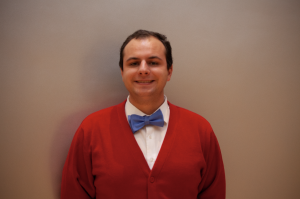 Most interpreters of Plato have had a difficult time reconciling Plato’s condemnation of poetry in the Republic with his praise of it in the Ionand Phaedrus. On closer inspection, however, it becomes clear that the Republic and the Ion and Phaedrusare talking about different things. Of note is that the Republic does not mention divine inspiration, unlike every other instance where Plato discusses poetry and poets. Instead, he focuses on the threat poetry poses to corrupt the youth in their moral education, as well as its aesthetic defects as something that distracts from the truth of the Forms. Yet in the Ion and the Phaedrus, a different picture of poetry emerges. Poetry comes from the Muses via possession, wherein poets are no longer in their right mind or even sane. Only inspiration enables poets to write well; otherwise, their verses are substandard and quickly forgotten, whereas poetry revealed by the Muses is both morally and aesthetically good. The paradox between the two accounts of poetry is not only in the value that Plato places on poetry; the account of poetic creation is likewise different. I argue that Plato created a “divine carveout” for poetry, consistent across his works and compatible with his criticisms of poetry itself in the Republic.Poetry that originates from the Muses is good but poetry created purely by humans is morally and aesthetically deficient. I also respond to two common objections, namely that Plato simply changed his mind between dialogues or else that he uses inspiration to refer euphemistically to lucky guesses (called “good opinion” in the Meno) on the part of poets, by citing ancient sources on Plato and referring to Plato’s aesthetic and moral theory.
Most interpreters of Plato have had a difficult time reconciling Plato’s condemnation of poetry in the Republic with his praise of it in the Ionand Phaedrus. On closer inspection, however, it becomes clear that the Republic and the Ion and Phaedrusare talking about different things. Of note is that the Republic does not mention divine inspiration, unlike every other instance where Plato discusses poetry and poets. Instead, he focuses on the threat poetry poses to corrupt the youth in their moral education, as well as its aesthetic defects as something that distracts from the truth of the Forms. Yet in the Ion and the Phaedrus, a different picture of poetry emerges. Poetry comes from the Muses via possession, wherein poets are no longer in their right mind or even sane. Only inspiration enables poets to write well; otherwise, their verses are substandard and quickly forgotten, whereas poetry revealed by the Muses is both morally and aesthetically good. The paradox between the two accounts of poetry is not only in the value that Plato places on poetry; the account of poetic creation is likewise different. I argue that Plato created a “divine carveout” for poetry, consistent across his works and compatible with his criticisms of poetry itself in the Republic.Poetry that originates from the Muses is good but poetry created purely by humans is morally and aesthetically deficient. I also respond to two common objections, namely that Plato simply changed his mind between dialogues or else that he uses inspiration to refer euphemistically to lucky guesses (called “good opinion” in the Meno) on the part of poets, by citing ancient sources on Plato and referring to Plato’s aesthetic and moral theory.
Bailey Wilden: “Bridging the Canon Gap: Using Digital Humanities to Expand Exposure to Women Writers in Spain and Portugal”
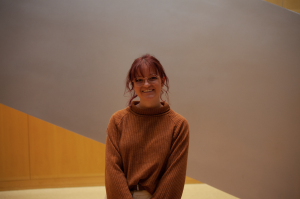 As research in women writers becomes more popular and their works are rediscovered, the problem of integrating more works by women authors into the canon of classical literature arises. This project is a unique combination of archival work, pedagogical research, and academic publication with the goal of making information about women writers and their texts more accessible to professors and students in university classrooms. As part of this unique mentored experience, I worked with a team of professors, graduate students, undergraduates, and the Digital Humanities team to conduct multifaceted research and create a cohesive product that will bring more women writers into college curriculums and classrooms.
As research in women writers becomes more popular and their works are rediscovered, the problem of integrating more works by women authors into the canon of classical literature arises. This project is a unique combination of archival work, pedagogical research, and academic publication with the goal of making information about women writers and their texts more accessible to professors and students in university classrooms. As part of this unique mentored experience, I worked with a team of professors, graduate students, undergraduates, and the Digital Humanities team to conduct multifaceted research and create a cohesive product that will bring more women writers into college curriculums and classrooms.
My preliminary research working on this project and the More than Muses database website allowed me to conduct archival research on Leonor de la Cueva y Silva, creating diplomatic transcriptions of her poetry and editing these transcriptions into pedagogical editions, which have been published on the website and will be used in BYU literature classrooms this fall. This research helped me have a deep understanding of Leonor de la Cueva y Silva’s works and facilitated creating additional pedagogical materials on her works.I will expand the scope of these lesson plans by including work by other lesser-known female authors (Maria do Ceo, Maria Egual, and Violante do Ceo) and amplify their reach to professors and other educators by publishing them on the More than Muses website. They include interpretations of the authors’ texts, activities and discussion questions to use in class, and other resources to help facilitate the inclusion of more women writers into the literary canon through exposure in university classrooms. As this project continues, Dr. Halling and I will also co-author a paper detailing our experience with mentored research and its positive influence on the Spanish and Portuguese field of study.
Emily Durney: “Supporting First-Generation College Students at BYU: A View from the Research and Writing Center”
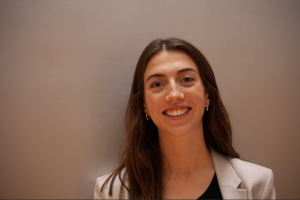 In recent years, according to Phil Rash, Director of BYU’s Office of First-Year Experience, the university has identified first-generation college students (FGCS) as an overlooked demographic and has made a concerted effort to focus on better understanding and supporting these students through clubs, activities, and faculty mentoring. The university has wanted to address the fact that FGCS are less likely to engage in their community, feel a sense of belonging on campus, or be aware of resources. As I worked as a writing tutor at the Research and Writing Center (RWC), I often thought about FGCS and how I could better support them in my role. Dr. David Stock and I performed a mixed-methods research study designed to answer the following questions: 1) What are BYU FGCS’s experiences with and attitudes toward writing and the RWC? and 2) How can the RWC better serve FGCS? Our methods included a survey, focus group interviews, and follow-up interviews. Survey data revealed that although FGCS had mostly positive attitudes towards writing, they felt uncomfortable seeking out university resources while adjusting to the demands of college-level coursework. Focus group interviews suggested that students often attributed this to life experiences in which they’ve had to solve problems independently or their efforts to seek help produced discouraging results. Follow-up interviews highlighted that the students who visited the RWC appreciated when consultants provided constructive feedback, sufficient time to discuss the feedback, and specific direction on how to implement that feedback. Overall, we learned that the RWC can better support FGCS by providing more targeted outreach to FGCS about how RWC services can benefit them and by familiarizing consultants with these students’ general backgrounds, college-level experiences, and needs. Within the College of Humanities, this research could also increase awareness and inclusion and improve writing support for FGCS.
In recent years, according to Phil Rash, Director of BYU’s Office of First-Year Experience, the university has identified first-generation college students (FGCS) as an overlooked demographic and has made a concerted effort to focus on better understanding and supporting these students through clubs, activities, and faculty mentoring. The university has wanted to address the fact that FGCS are less likely to engage in their community, feel a sense of belonging on campus, or be aware of resources. As I worked as a writing tutor at the Research and Writing Center (RWC), I often thought about FGCS and how I could better support them in my role. Dr. David Stock and I performed a mixed-methods research study designed to answer the following questions: 1) What are BYU FGCS’s experiences with and attitudes toward writing and the RWC? and 2) How can the RWC better serve FGCS? Our methods included a survey, focus group interviews, and follow-up interviews. Survey data revealed that although FGCS had mostly positive attitudes towards writing, they felt uncomfortable seeking out university resources while adjusting to the demands of college-level coursework. Focus group interviews suggested that students often attributed this to life experiences in which they’ve had to solve problems independently or their efforts to seek help produced discouraging results. Follow-up interviews highlighted that the students who visited the RWC appreciated when consultants provided constructive feedback, sufficient time to discuss the feedback, and specific direction on how to implement that feedback. Overall, we learned that the RWC can better support FGCS by providing more targeted outreach to FGCS about how RWC services can benefit them and by familiarizing consultants with these students’ general backgrounds, college-level experiences, and needs. Within the College of Humanities, this research could also increase awareness and inclusion and improve writing support for FGCS.
Andrew Murphy: “Folklore and Tourism of the Hungarian Soviet Era”
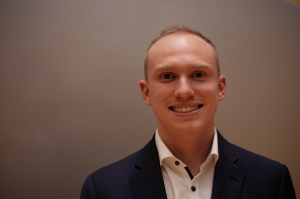 Lake Balaton, the largest lake in Central Europe, has been a gathering place of Hungarian people for centuries. After the end of World War II and the beginning of the Soviet regime in Hungary, the lake became even more popular as visitors flooded in from Russia, East Germany, and other Soviet controlled countries. Thanks to the HumGrant program, I have been able to collect and study personal histories and narratives of those who both travelled during these times and those who are still affected by these new patterns of leisure travel. When scholars such as József Böröcz and Zsolt Nagy have studied the sociological importance of tourism in Soviet Era Hungary, they have done so through statistical and historical methods. These approaches create data that helps us understand large-scale trends that and lead to a better understanding of the overall period.While these perspectives are extremely helpful in our understanding of Soviet Hungary, I aim to build upon their work by approaching the topic through the lens of folklore, specifically through the collection of oral personal narratives. Precedent set by folklorist Sandra K. D. Stahl shows that the gathering of these narratives can draw out common patterns and traditions within groups of people. By gathering and studying oral travel narratives of Soviet Hungary, we gain knowledge about the opportunities allowed to individual eastern bloc citizens and demonstrate how these experiences helped shape the traditions of travel and leisure in contemporary Hungary. Narratives also provide examples of the ways in which individuals utilize leisure travel as a means of social and cultural adaptation while reflecting on their experiences through the art of storytelling.
Lake Balaton, the largest lake in Central Europe, has been a gathering place of Hungarian people for centuries. After the end of World War II and the beginning of the Soviet regime in Hungary, the lake became even more popular as visitors flooded in from Russia, East Germany, and other Soviet controlled countries. Thanks to the HumGrant program, I have been able to collect and study personal histories and narratives of those who both travelled during these times and those who are still affected by these new patterns of leisure travel. When scholars such as József Böröcz and Zsolt Nagy have studied the sociological importance of tourism in Soviet Era Hungary, they have done so through statistical and historical methods. These approaches create data that helps us understand large-scale trends that and lead to a better understanding of the overall period.While these perspectives are extremely helpful in our understanding of Soviet Hungary, I aim to build upon their work by approaching the topic through the lens of folklore, specifically through the collection of oral personal narratives. Precedent set by folklorist Sandra K. D. Stahl shows that the gathering of these narratives can draw out common patterns and traditions within groups of people. By gathering and studying oral travel narratives of Soviet Hungary, we gain knowledge about the opportunities allowed to individual eastern bloc citizens and demonstrate how these experiences helped shape the traditions of travel and leisure in contemporary Hungary. Narratives also provide examples of the ways in which individuals utilize leisure travel as a means of social and cultural adaptation while reflecting on their experiences through the art of storytelling.
Caroline Johnson: “’One Status and One Condition’: Miné Okubos’s Charcoal Representation of Mothers and Children in the Topaz Internment Camp”
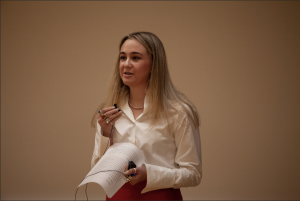 While enrolled in an American Art History course, I was presented with an optional assignment which consisted of reading through Franklyn D. Roosevelt’s Executive Order 9066 and visiting the Topaz Museum and Relocation Site in Delta, Utah.Through a familial connection, I was able to visit the museum despite it being closed due to the COVID-19 Pandemic.We spent the afternoon walking through the museum and its archives, viewing artwork and artifacts, including recent acquisitions which were not currently on display.
While enrolled in an American Art History course, I was presented with an optional assignment which consisted of reading through Franklyn D. Roosevelt’s Executive Order 9066 and visiting the Topaz Museum and Relocation Site in Delta, Utah.Through a familial connection, I was able to visit the museum despite it being closed due to the COVID-19 Pandemic.We spent the afternoon walking through the museum and its archives, viewing artwork and artifacts, including recent acquisitions which were not currently on display.
The art exhibition on display at the time of my visit was a collection of Miné Okubo’s work, a female artist from California who was an internee at the Topaz Internment Camp in 1942.After her internment, she was employed by Fortune Magazine, who published many of her drawings as well as Citizen 13660, a graphic novel combining her drawings and a narration of her experiences.However, it was her lesser known works in other mediums that particularly impacted me.In conjunction with the information I had been taught at the museum and a visit to remains of the relocation site, I began to better understand a small part of the immense feeling of sacrifice, loss and sadness so many displaced Japanese-American individuals felt during their time at the camp and during World War II.
In this presentation I will show how Miné Okubo, through her charcoal series: Mother and Children, uses an “x” shape to emphasize the loss of freedom experienced by the internees.Employing the same symbol to depict both the barbed wire that surrounded the camp as well as a form of shading on the bodies of individuals, she is able to show the physical, emotional, and social separation of the Japanese-American citizens with lives they lived previous to the forced evacuation and internment.






